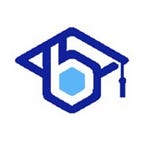Brain-Based Learning | Bright Classroom Ideas
An Introduction to Brain-Based Learning
Have you ever wondered how your brain learns, if it’s something that you’re born with or if it’s something that you have to train your brain to do? When giving information to your students, you need to keep in mind how you present that information, how much to present, and what the most important part of that information is.
This will allow the brain to recognize things that should be stored for long-term memory. The use of repetition, rehearsal, and practice will help your students properly code this information. As teachers, our goal always is for retention. We want our students to remember the information year after year. Students retain the most information within the first 20 minutes of the lesson. Keeping this in mind, you can present the most important information of your unit first and then break down the details later.
The human brain contains around 100 billion neurons. These neurons are changing. Humans continue to produce neurons throughout our lives with connections between neurons constantly being created, strengthened, weakened or removed.
Around 400 BC Hippocrates proposed that the brain was the center of intelligence and was involved in all sensations. In the thousands of years that have passed since then different sciences were developed around this: neural biology, biochemistry, cognitive psychology, and neuroscience. The term ‘brain-based learning’ first appears in print…
